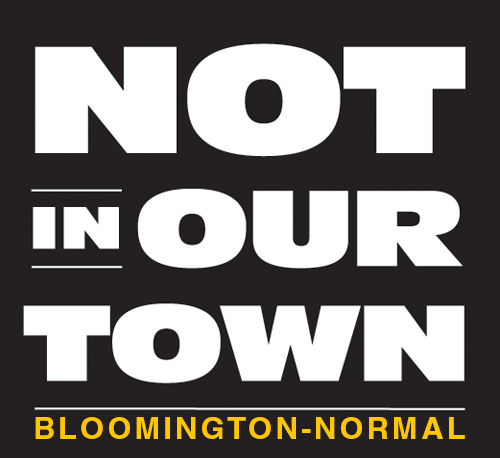It was a contentious time and a contentious issue. A nation of immigrants wary of a new group of foreign refugees, workers, and families flowing into their communities. Doors barred to these newcomers, ugly propaganda painting these new arrivals as criminals, ne'er-do-wells, and even as subhumans. People indentured into a virtual servitude, and occasional acts of violence and terror committed in the name of fear and hatred.
The King of A-Shantee, a cartoon from an 1885 edition of the then-popular magazine Puck's, illustrates the bigotry of the time toward the Irish. The cartoon is one of several pieces of anti-Irish propaganda and prejudice on display at the McLean County Museum of History.
Rough times for the Irish families that settled in Central Illinois in the 19th Century -- they experienced bigotry, discrimination, and suspicion that resonates in today's contentious immigration debate. The McLean County Museum of History's Greening of the Prairie exhibit, on display in downtown Bloomington through January 16, explores how one group, now prominent in Twin Cities business, politics, and community life, faced and eventually overcame deep-seated public prejudice.
The exhibit features historic objects, photographs, and maps about Irish-Catholic famine immigrants who came to this area in the early 1850s to escape the Irish famine brought on by widescale potato blight . They worked to build the railroad and opened early black-dirt prairie farms, following on the heels of Protestant Scots-Irish pioneers.
This exhibit examines why they left Ireland, the challenges they faced once they arrived, their successes and failures, and the impact their presence has had on our community. The Irish-Catholic immigrants faced major local hostility -- the anti-Catholic American Protective Association and the Ku Klux Klan were active in the region; KKK members reportedly included a number of local professionals and leaders.
Museum Curator Susan Hartzold muses grimly about the sweeping bigotry of the time -- an anti-immigrant sentiment "that's still going on" as Americans debate over Mexican labor and Syrian refugees.
"There are things we're not proud about in our history, but we don't want to sweep them under the rug," Hartzold acknowledges. "We had lots of anti-Irish, anti-Catholic sentiment in this town. It's important that people become aware of those things so they don't let them happen again."
However, the Irish overcame bigotry and were embraced by a growing number of residents. Irish farms became common in the Merna and south Downs area.
The exhibit highlights many notable McLean County Irish families, including: the Costigans who were grocers, lawyers and a judge; the Irvins, who started the Bloomington Pepsi bottling company; and the Quinns, who launched a gas station that still exists today. The Boylans became renowned for their candies and soft drinks. And by 1913, local clothing store Costello and O'Malley's sponsored a baseball team in the popular Catholic Forester's League.




